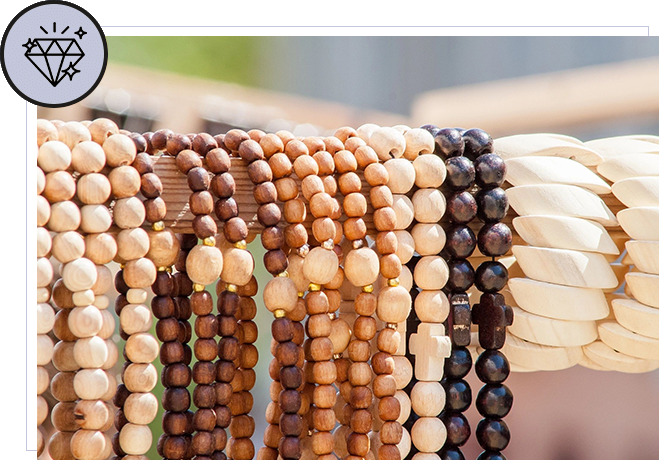Expert Jewelry Appraisal Services
With our jewelry appraisal services, we understand the importance of knowing the true value of your treasured pieces. Our expert appraisal services cater to consumers, dealers, and retailers, providing immediate appraisal while you wait and watch.
Appraisal Types
We cover:
Our Services
Jewelry Appraisals for Insurance: Ensure your valuable pieces are accurately assessed for insurance coverage.
Divorce Appraisals of Jewelry: Obtain precise valuations during divorce proceedings.
Pre- and Post-Purchase Consultation: Make informed decisions with expert advice before or after your jewelry purchase.
Diamonds
Utilizing the four C's, we assess diamonds for color, clarity, carat, and cut.
Diamond Grading Scale
(FL) Flawless to (I3) Imperfect, our detailed grading considers inclusions visible at different magnifications. Our comprehensive approach ensures accurate assessments of beauty, durability, and overall quality.
Facet Arrangement of a Standard
Round Brilliant
Understand the intricate facet arrangement of a standard round brilliant diamond for a deeper insight into its craftsmanship.
Diamond Treatments
Learn about various treatments, such as laser drilling, clarity enhancement, HTHP, and irradiation, used to enhance diamond appearance. Our commitment to transparency aligns with Federal Trade Commission requirements for treatment disclosure.

Pearls
Pearls, the epitome of timeless elegance, are crafted within the shells of select mollusks, with the finest specimens originating from the Pearl Oyster. Composed of conchiolin and calcium carbonate, secreted by the mantle—a protective tissue surrounding the pearl oyster—the layers of "NACRE" form concentrically around a foreign particle, skillfully inserted by man to cultivate these treasures.
Lengths and Styles
Graduated: Pearls that subtly increase in size, creating a graceful and harmonious strand.
Choker (14 to 16"): A shorter length, embracing the neck with sophistication.
Princess (18" in length): A classic, versatile length suitable for various necklines.
Matinée (20 to 24"): A longer strand that exudes refined elegance.
Opera (28 to 30"): Dramatic and luxurious, perfect for special occasions.
Rope (31 to 40"): A versatile, extended length for creative styling.


Pearl Grading Components
Color: A vast array of hues, from delicate pinks to rich blacks, each complementing different skin tones.
Luster: Ranging from very high with bright, sharp reflections to very low with subtle or non-existent reflections.
Nacre: The material forming the pearl and mother-of-pearl, varying in thickness from very thick (at least .05 mm) to very thin (.025 mm or less on most pearls).
Shape: From perfectly round to uniquely Baroque, pearls exhibit diverse shapes, such as mostly round and slightly off-round.
Blemishes: from flawless pearls, free of blemishes, to heavily spotted pearls with visible imperfections.
Uniformity: Ranging from Excellent, displaying uniform appearance and size, to Poor, with noticeable variations in size and appearance in over 1/3 of the pearls.
Colored Stones
In the vibrant world of colored stones, we employ a comprehensive grading system and provide insights into common treatments to enhance your understanding and appreciation of these unique gems.
Colored Stone Grading Nomenclature
Color Components: Described by three elements: hue, tone, and saturation. Hue represents the dominant color, while tone indicates lightness or darkness, and saturation measures the strength of the color.
Clarity Grading: Utilizes the same nomenclature as diamonds (FL, VVS, VS, etc.), with adjustments for naturally occurring inclusions based on gemstone type (Type I, II, or III). Grading standards range from strictly flawless to more lenient for included gemstones.
Cut Evaluation: Proportions and finish assessment considers factors like outline balance, depth, bulge, windowing, extinction, polish, and symmetry.
Final grading aligns with standards set forth in The Guide, categorized as Commercial (Lower, Middle, or Upper), Good, Fine, or Extra Fine.
Colored Stone Treatments
Gems often undergo treatments to enhance appearance, with stable practices considered usual and customary when properly disclosed.
Detection and assessment of treatments are noted in the appraisal, ensuring transparency for the consumer.
Treatments may include heat, oiling, polymer resins, and irradiation, each impacting the gemstone's, stability, and care requirements.
Common Gemstone Treatments
The following list describes some common gemstone treatments.
It is not inclusive of all treatments.
| Gemstone | Treatment | Frequency | Stability | Care of Gem |
|---|---|---|---|---|
| Ruby | Heat, Possible residue | Usually | Excellent | Normal |
| Sapphire | Heat | Usually | Excellent | Normal |
| Emerald | Oil, Opticon, or polymer resins | Usually | Fair to Good | Caution |
| Tanzanite | Heat | Always | Excellent | Caution |
| Pearl | Bleach | Usually | Very good | Caution |
| Opal | Oil, Wax, or Epoxy | Rare | Fair | Caution |
| Blue Topaz | Irradiated | Always | Excellent | Normal |
Other treatments may include irradiation, dye, coatings, and diffusion. Proper disclosure is crucial, and fraudulent practices, like undisclosed dyeing, are considered unethical.
Reach Out to Us
Discover the unique characteristics and treatments of colored stones with our meticulous appraisal services. Contact us to schedule your consultation and gain a deeper understanding of the vibrant world of colored gemstones.